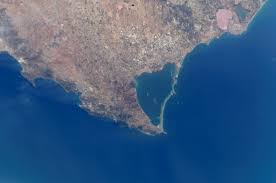The Mar Menor: Spain’s Troubled Coastal Lagoon

Introduction
Mar Menor, located along the Mediterranean coastline of Spain, is one of the largest coastal lagoons in Europe. This unique ecosystem is renowned for its crystal-clear waters and rich biodiversity, attracting tourists and researchers alike. However, Mar Menor is currently facing significant environmental challenges that threaten its delicate balance, making its preservation crucial for both local wildlife and the tourism economy.
Current Environmental Challenges
In recent years, Mar Menor has been subject to various ecological issues, mainly attributed to agricultural runoff, urban development, and climate change. Fertiliser and pesticide runoff from nearby agricultural land has led to hyper-eutrophication, resulting in algal blooms that deplete oxygen levels in the water. Consequently, this has severely affected marine life, contributing to the death of fish and the deterioration of the lagoon’s health.
In September 2023, reports indicated a significant increase in the dead fish population found along the shores, prompting immediate concerns among environmentalists and local communities. Activists have rallied to raise awareness and called for urgent government intervention to prevent further degradation of the lagoon.
Government Response and Initiatives
In response to these pressing issues, the Spanish government, along with regional authorities, has initiated several measures aimed at restoring the lagoon’s natural state. These initiatives include stricter regulations on agricultural practices and erosion control projects to reduce runoff entering the lagoon. Professor Antonio Ruiz, an environmental scientist at the University of Murcia, stated, “Immediate action is needed to reverse the damage done; otherwise, we risk losing this unique habitat forever.”
Additionally, European funding has been secured to support research and conservation efforts aimed at restoring biodiversity in Mar Menor. Various non-governmental organisations (NGOs) are also collaborating with local stakeholders to promote sustainable tourism that benefits the economy while protecting natural resources.
Conclusion
Mar Menor is at a critical junction; its ecological integrity relies heavily on concerted efforts by governments, scientists, and the public to implement effective conservation strategies. If successful, these measures could not only revive this invaluable ecosystem but also serve as a model for other regions facing similar threats. Ensuring the future of Mar Menor is not just an environmental imperative; it is essential for the wellbeing of the communities that depend on its health and prosperity. As we move forward, the support and awareness of both locals and visitors will be key to restoring this coastal gem.
